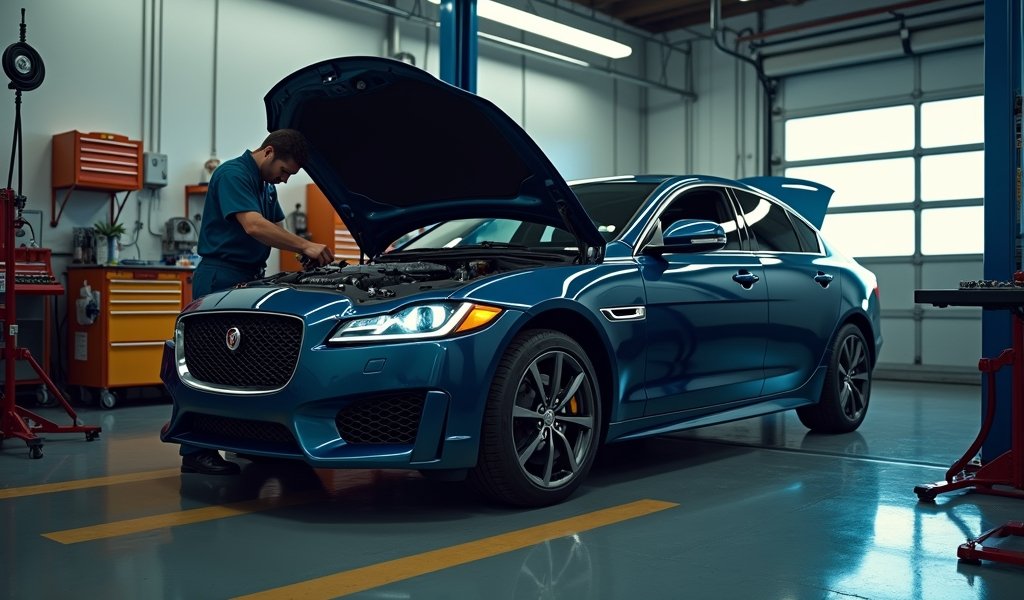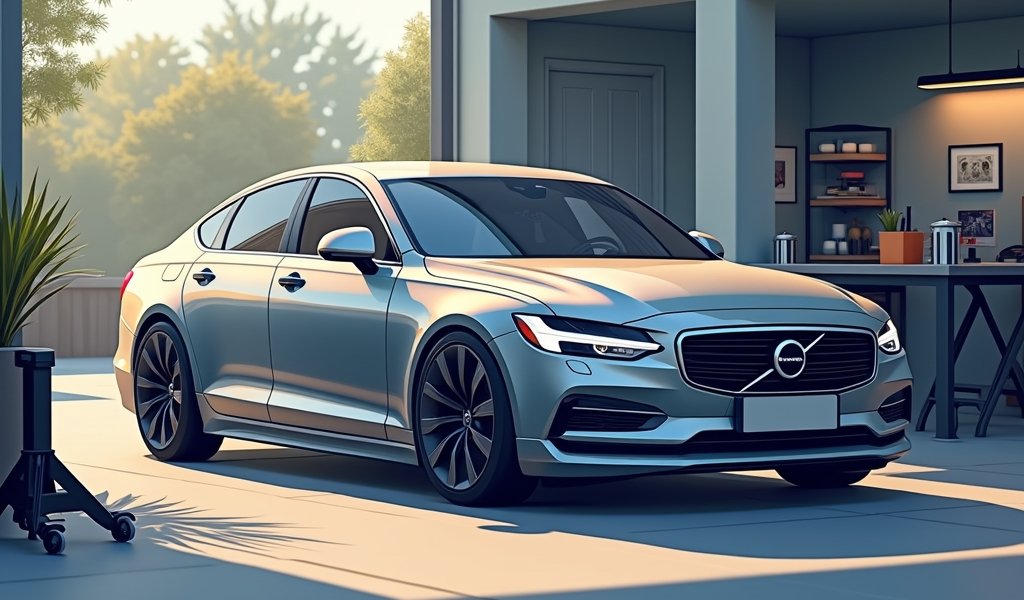Overview
This article provides guidance on finding affordable car lease deals locally while using DIY maintenance to save money throughout the lease term and avoid end-of-lease charges. It covers leasing basics, strategic timing for finding deals, essential self-maintenance tasks, when to seek professional help, and how to prepare for lease-end inspections to potentially save thousands over a typical 36-month lease.
Table of Contents
- Understanding Car Leasing Basics
- Finding Affordable Lease Deals Locally
- Essential DIY Maintenance for Leased Vehicles
- Cost-Saving Benefits of DIY Maintenance
- When to Seek Professional Help
- Navigating Lease-End Inspections
- Conclusion
- Frequently Asked Questions
Looking for cheap car lease deals near you? You’ve come to the right place. As a certified mechanic with over 15 years in the automotive industry, I’ve seen firsthand how combining affordable lease terms with proper DIY maintenance can save you thousands. Think of your leased vehicle as a temporary partnership – treat it right, and it’ll be kind to your wallet in return.
The secret that most dealerships won’t tell you? Simple maintenance tasks you can perform yourself will dramatically reduce your overall leasing costs and help you avoid those dreaded end-of-lease charges. Let’s dive into how you can find the best local lease deals and keep that vehicle in top shape without breaking the bank.
Understanding Car Leasing Basics
Before hunting for cheap car lease deals near you, it’s crucial to understand what you’re actually paying for. Unlike buying, leasing means you’re essentially covering the vehicle’s depreciation during your usage period, plus fees and interest.
The key components that determine your lease payment include:
- The vehicle’s sale price (capitalized cost)
- The predicted end value (residual value)
- The money factor (similar to an interest rate)
- The lease term (typically 24-36 months)
Your negotiating power lies mainly in the capitalized cost. Even with advertised “special lease deals,” this figure is rarely set in stone. I’ve helped countless customers knock hundreds or even thousands off the capitalized cost, instantly reducing their monthly payments.
Remember, lower monthly payments aren’t always the best deal. A lease calculator can reveal the true costs when comparing different offers. Focus on the total lease cost including down payment, monthly payments, and potential end-of-lease fees.

Finding Affordable Lease Deals Locally
Finding cheap car lease deals near you requires a strategic approach. As someone who’s worked with dealerships for years, I can tell you timing is everything.
Start by searching at the end of the month or, better yet, the end of the quarter (March, June, September, and December). Dealerships are scrambling to hit sales targets during these periods, making them more likely to offer aggressive lease incentives. The December holiday season, especially, can yield exceptional deals as dealerships clear inventory before year-end.
Here’s my tested approach to finding the best local lease deals:
- Create a target list of 3-5 local dealerships for your desired vehicle makes
- Check manufacturer websites for current national lease promotions
- Use specialized lease comparison tools to gauge market rates
- Visit dealerships later in the day (when they’re eager to close deals)
- Always ask about additional dealer discounts beyond advertised specials
Don’t limit yourself to just the closest dealerships. Sometimes driving an extra 30 minutes can save you $50-100 monthly on your lease payment. I’ve seen customers save over $2,000 on a 36-month lease simply by expanding their search radius.
When comparing offers, be wary of the “payment focus trap.” Salespeople love steering conversations toward the monthly payment while hiding higher money factors or reduced mileage allowances. Always ask for the complete breakdown of the lease terms.
For those seeking premium vehicles, specialized luxury car lease specials can sometimes offer surprisingly competitive rates, especially on models approaching redesign years.
Essential DIY Maintenance for Leased Vehicles
Now for the part that can save you hundreds, if not thousands: proper DIY maintenance of your leased vehicle. As a mechanic, I can assure you that these simple tasks require minimal tools and expertise but deliver maximum financial benefit.
First, let’s start with the basics that anyone can handle:
- Regular exterior washing (every 1-2 weeks)
- Thorough interior cleaning (monthly)
- Tire pressure checks (monthly)
- Fluid level inspections (monthly)
For exterior care, invest in quality microfiber towels and pH-neutral car soap. The automatic car wash might seem convenient, but those abrasive brushes can create fine scratches that accumulate over time. Hand washing takes just 20 minutes and preserves your paint finish, which lease return inspectors scrutinize closely.
Interior maintenance is equally crucial. Vacuum regularly and immediately clean any spills. For leatherette or leather seats, use appropriate conditioners quarterly to prevent cracking. Small investments in rubber floor mats can prevent carpet stains that often trigger lease-end penalties.
For those comfortable with basic tools, these intermediate tasks can save significant money:
- Air filter replacement (every 15,000-30,000 miles)
- Wiper blade replacement (twice yearly)
- Headlight bulb replacement (as needed)
- Tire rotation (every 5,000-7,000 miles if your lease agreement permits)
Always consult your lease agreement before performing maintenance beyond cleaning. Some leases require dealer servicing, but many allow DIY maintenance as long as you keep records and use manufacturer-approved parts.
The most overlooked aspect of leased vehicle care? Documentation. Keep detailed records of all maintenance performed, whether by you or a professional. This documentation is your protection against unwarranted wear-and-tear charges when returning your leased vehicle.
Cost-Saving Benefits of DIY Maintenance
The financial advantages of DIY maintenance on your leased vehicle are substantial. Let me break down the numbers based on what I’ve seen with my customers:
- Professional detailing costs $150-250 quarterly vs. $25-40 in DIY supplies
- Dealer air filter replacement runs $50-80 vs. $15-25 DIY
- Professional tire rotations cost $80-120 vs. $0 if you have basic tools
- End-of-lease cleaning typically costs $200-300 vs. minimal cost with ongoing DIY care
Over a typical 36-month lease, these savings can exceed $1,500. But the bigger financial benefit comes at lease-end. Dealerships routinely charge $300-700 for “excessive wear and tear” that could have been prevented with simple maintenance.
For example, I recently helped a customer prepare for their lease return inspection. The vehicle had minor scratches that the dealership quoted $450 to repair. With a $15 touch-up pen and 30 minutes of careful work, we addressed the issues to the inspector’s satisfaction – saving $435 instantly.
Beyond direct financial savings, regular maintenance preserves the vehicle’s performance. Properly maintained tires improve fuel economy by 3-5%, and clean air filters can improve efficiency by 2-3%. These small percentages add up to real money over three years of driving.
Remember that lease companies build expected maintenance costs into their contracts. By performing simple DIY tasks, you’re essentially reclaiming value that’s already factored into your payment structure.

When to Seek Professional Help
While DIY maintenance can save you money, knowing when to seek professional help is equally important. As a mechanic, I’ve seen too many well-intentioned DIYers create costly problems by tackling jobs beyond their skill level.
Always consult professionals for:
- Engine or transmission issues
- Electrical system problems
- Brake system repairs (beyond pad inspection)
- Suspension or steering concerns
- Dashboard warning lights that persist after basic checks
Modern vehicles have complex computer systems that require specialized diagnostic equipment. A blinking check engine light isn’t something to ignore or attempt to fix without proper tools. According to Consumer Reports, addressing warning lights promptly can prevent minor issues from becoming major expenses.
For maintenance that falls in the gray area, consider your comfort level, available tools, and the potential consequences of mistakes. Changing a cabin air filter is relatively straightforward, while replacing brake pads requires more technical knowledge and safety awareness.
When selecting a professional service for your leased vehicle, independent shops often offer lower rates than dealerships while providing quality work. However, some lease agreements specify dealer servicing for certain items, so review your contract before choosing an alternative service provider.
Thankfully, many dealerships offer competitive maintenance packages for leased vehicles. These can sometimes be negotiated when finalizing your lease terms. If you’re considering taking over someone else’s lease, be sure to verify what maintenance packages might be included.
Navigating Lease-End Inspections
The lease-end inspection often causes anxiety, but with proper preparation, it can be painless. As someone who’s guided hundreds of customers through this process, I can tell you that inspectors aren’t looking for perfection – just reasonable condition relative to the vehicle’s age and mileage.
Prepare for your lease-end inspection by:
- Conducting your own thorough inspection 2-3 months before lease-end
- Addressing minor issues yourself (scratches under 2 inches, small dents, etc.)
- Getting estimates for larger issues from both the dealer and independent shops
- Thoroughly cleaning the vehicle inside and out before inspection
- Compiling maintenance records to demonstrate proper vehicle care
Most lease companies follow standards established by the American Automobile Leasing Association for defining excess wear and tear. Familiarize yourself with these guidelines before your inspection.
If the inspector identifies excess wear charges, you typically have options. You can pay for repairs through the leasing company, handle repairs independently before final turn-in, or in some cases, negotiate the charges based on documentation of your maintenance history.
The most effective approach? Schedule a pre-inspection about 30 days before your lease ends. This gives you time to address any issues on your terms rather than paying premium prices for repairs through the leasing company. I’ve seen customers save hundreds by addressing pre-inspection findings themselves.
Conclusion
Finding cheap car lease deals near you is just the first step in maximizing your automotive budget. The real savings come from combining favorable lease terms with consistent DIY maintenance throughout your lease period. This two-pronged approach can reduce your total leasing costs by thousands over a typical 36-month term.
Remember that leasing is essentially paying for depreciation and use. By maintaining your vehicle properly, you’re minimizing unnecessary wear that exceeds normal use parameters – directly protecting your wallet at lease-end.
The knowledge and skills you develop through DIY maintenance of your leased vehicle transfer to future vehicles as well, creating a lifetime of savings and a deeper connection to your transportation. As a mechanic who’s worked with vehicles for decades, I can assure you that the time invested in learning basic maintenance pays dividends far beyond your current lease.
Whether you’re leasing your first vehicle or your fifth, the principles remain the same: negotiate aggressively on the front end, maintain diligently throughout, and prepare thoroughly for the return inspection. Follow this approach, and you’ll join the ranks of savvy lessees who enjoy the benefits of new vehicles without the excessive costs that many accept as inevitable.
Frequently Asked Questions
What’s the best month to find cheap car lease deals near me?
December typically offers the best lease deals as dealerships clear inventory before year-end. End-of-quarter months (March, June, September) also feature aggressive incentives to meet sales targets.
Can I negotiate a car lease deal like I would when buying?
Absolutely! Negotiate the capitalized cost (vehicle price) just like a purchase, as this directly affects your monthly payment. Many dealerships have more flexibility than they initially reveal.
How much mileage should I request for the best lease value?
Request only what you’ll realistically drive, typically 12,000-15,000 miles annually for most drivers. Paying for unused miles wastes money, while exceeding your allowance costs 15-30 cents per mile in penalties.
Do all lease-end scratches and dents result in charges?
No, most lease agreements allow for “normal wear and tear,” generally permitting scratches under 2 inches and minor dents smaller than a quarter. Anything larger typically incurs charges unless repaired before return.
Is it worth paying for the dealer’s maintenance package on a leased vehicle?
It depends on the specific package and your DIY comfort level. Calculate the package cost against the included services you would otherwise pay for separately. Many basic maintenance tasks can be performed yourself for significant savings.

